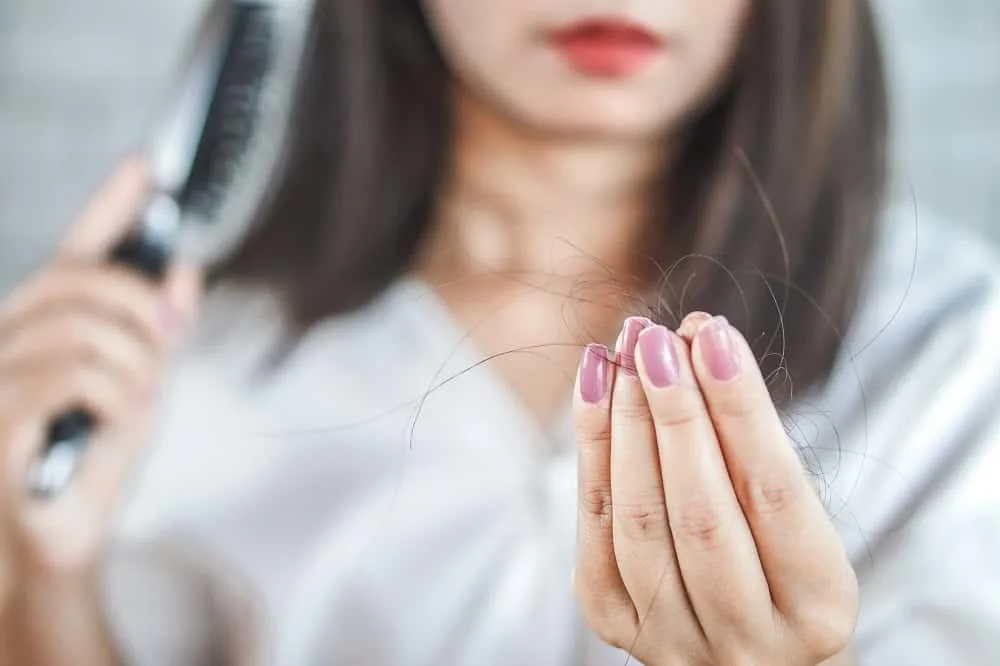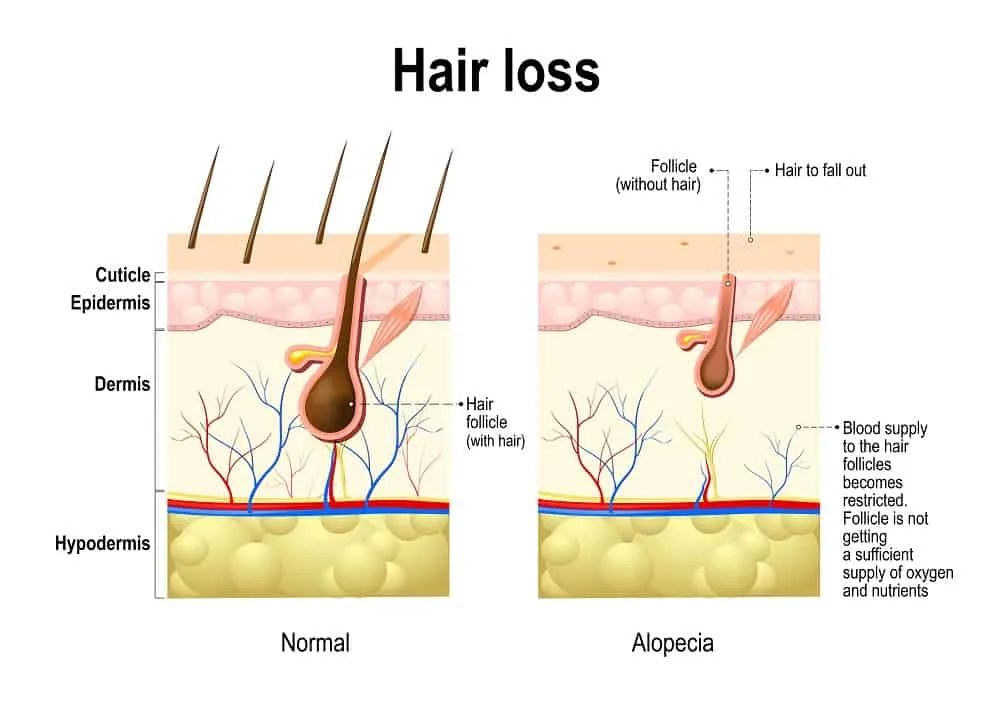Are you noticing more hair coming out in your hair brush or rinsing down the drain? It’s easy to panic in this scenario. Help! My hair is falling out from the root!
While losing hair is stressful, there are a variety of reasons as to why this might be happening and various approaches for correcting it.
First, it helps to understand the structure and cycle of the hair root to help determine why your hair may be falling out more than usual.
The Cycle of Hair Roots

The human body contains over 5 million hair follicles, with about 100,000 on the head. Much like many aspects in nature, these follicles follow a hair growth cycle and constantly work to grow new hair.
You might see a follicle bulb attached to the end if you pull your hair out by accident or a hair falls out. This bulb sits in the follicle, a tube-like structure of the epidermis, or skin layer. A new bulb will form over time if you’ve lost one.
All hair and the follicles that grow out follow a specific phase, which may help you understand why you’re seeing shedding, whether it be the typical amount or more than normal.
Anagen: This is the active growth stage and typically lasts from 2-8 years. The majority of the hair on your head is in this phase.
Catagen: A transitional phase lasting 4-6 weeks, catagen is when hair stops growing.
Telogen: In this final resting phase, hair falls out over a period of 2-3 months. Approximately 5-10% of the hair on your head is currently in this period.
After these phases, you may still wonder about the fate of the rest of your hair.
Does Hair Grow Back After Falling Out From Roots?
It depends.
Hair can fall out for a wide variety of reasons. If the reason is self-induced, like you just pulled your hair out from the root or hair fell because of dryness or over-styling, yes it’ll grow back again like before.
If the hair loss happened because of permanent reasons like genetics, age, or diseases; in most cases, the hair won’t grow back.
Different Reasons Hair May Fall Out

Sometimes, hair falls out from the root because of a temporary scenario. Your hair may be excessively dry, it might experience fatigue from over-styling, or you might be pulling it far too tight in a ponytail or updo. You may notice this traction alopecia along the temples at the hairline.
Stress, smoking, and extreme dieting can also lead to lack of blood flow and nutritional deficiencies that promote hair loss. Many women experience hair loss after giving birth or if they stop taking birth control.
Chemotherapy is known to make hair fall out and acute trauma can shock the system, leading to hair loss. Certain medications also indicate that hair loss may occur.
The majority of the time, these temporary situations can be remedied and hair loss can be restored. As long as the hair follicle hasn’t stopped growing, this type of hair loss can be reversed.
On the other hand, hair may fall out for permanent reasons. Age and genetics play a huge role in hair loss, especially when it comes to male pattern baldness.
Hormones, autoimmune diseases and thyroid problems can also cause hair loss. These situations may be more difficult to control and are often irreversible.
Different Types of Hair Loss

In pattern hair loss, the follicle shrivels up, preventing any more hair formation from occurring. Although hair cannot be regrown, the loss can be slowed down with an oral or topical treatment like Rogaine.
Women may lose hair during menopause, though it typically grows back after this period. Men can also undergo hormonal changes for a variety of reasons and may experience hair falling out.
Hair loss can also occur if a significant reduction of iron or zinc happens over a period of time. Whether examining your lifestyle or talking to your doctor, taking time for yourself can help you determine which type of hair loss you’re suffering from and whether its effects can be reversed or slowed.
Getting Hair to Grow Back

Unless you’re suffering from genetic baldness, there are many changes you can make to conquer this loss and get your hair flowing again.
First, take a look at your diet. Are you consuming enough whole foods rich in protein and vitamins, and minerals? Examine your iron levels and consider incorporating more vitamin C into your foods.
If use and abuse are your issues, avoid harmful chemicals and heat styling at all costs. Put down the straightener, add a nourishing mask, and give your hair some rest.
Massaging your scalp is an excellent (and totally free!) way to promote hair growth. Use your fingers to distribute a nourishing oil like jojoba all over your scalp and watch the results. Using a boar bristle brush is also great for your scalp health.
Check out your hair’s protein and moisture balance. You may need some keratin products or to try out a conditioning mask.
Trimming hair can halt hair loss. When hair is damaged, it splits right up the middle, causing significant hair loss. Cutting away dead ends will leave your hair thicker.
Meditation is something to consider incorporating into your lifestyle to alleviate stress and combat trauma that can lead to hair loss.
Finally, look into clinically approved topical or oral treatments. Don’t trust everything you see online; seek specifically approved treatments like Minoxidil. Initially developed to treat high blood pressure, this drug came with a hair-thickening side effect. It does have to be taken daily, otherwise, the hair growth will fall.
If you’re experiencing hair falling out, don’t stress. More times than not, the loss can be restored. If it’s due to age or genetics, the losing process can be slowed thanks to a variety of hair treatments. Most importantly, remember to take a few deep breaths and give your hair the care it deserves.
